#ScienceCommunity
Explore tagged Tumblr posts
Text
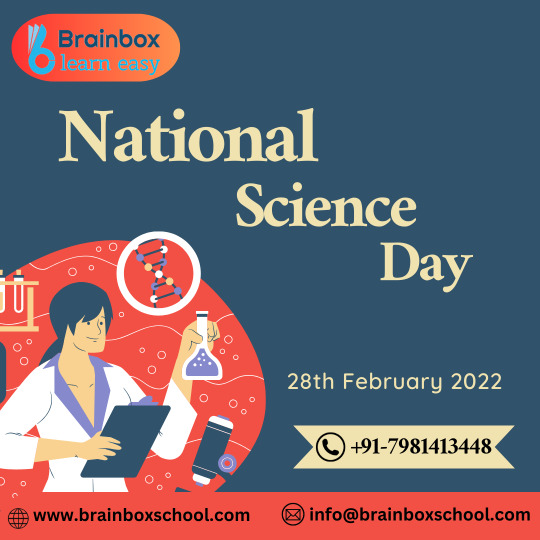
🌟 Happy National Science Day! 🌟
Today, we celebrate the marvels of science that shape our world and propel humanity forward. From groundbreaking discoveries to technological innovations, science fuels progress and inspires curiosity.
On this day in 1928, the renowned physicist Sir C.V. Raman discovered the Raman Effect, a phenomenon that revolutionized the way we understand light and matter. 🎉
Let's honor the spirit of inquiry and discovery that drives scientists everywhere. Whether it's unlocking the mysteries of the universe, finding solutions to pressing global challenges, or improving everyday life, science touches us all.
Join us in celebrating NationalScienceDay and let's continue to explore, innovate, and make the world a better place through the power of science!
#NationalScienceDay#ScienceDay#ScienceAndInnovation#CelebratingScience#Discoveries#Curiosity#STEM#ScienceIsFun#RamanEffect#ScienceCommunity#ScientificDiscovery#Innovations
2 notes
·
View notes
Text



Discovering Einstein's Desk After His Death What It Tells Us About His Lasting Impact
#Einstein#scientist#innovator#discovery#legacy#history#scientifichistory#desk#office#science#sciencefacts#sciencecommunity
2 notes
·
View notes
Text

Celebrating the power of curiosity and innovation on National Science Day—honoring the brilliant minds who shape our future through discovery and exploration!
#NationalScienceDay#ScienceForAll#Innovation#Discovery#Curiosity#STEM#ScienceMatters#FutureOfScience#ScienceCommunity#ScientificExcellence#GSuniversity#Delhincr
0 notes
Text
Microbial Biotechnology: Innovations, Applications & Future Trends for a Sustainable World

The Transformative World of Microbial Biotechnology: Innovations, Applications, and Future Prospects
Microbial biotechnology is a rapidly evolving field that leverages microorganisms to address global challenges in healthcare, agriculture, industry, and environmental sustainability. By utilizing the capabilities of bacteria, fungi, algae, and other microorganisms, researchers are driving innovations that impact society profoundly.
microbial biotechnology, sustainable agriculture, industrial microbiology, bioengineering solutions, environmental microbiology.
What is Microbial Biotechnology?
Microbial biotechnology refers to the application of microorganisms to develop beneficial products and processes across various industries. These microorganisms can be naturally occurring or genetically engineered, playing key roles in areas like fermentation, biofuel production, and bioremediation.
what is microbial biotechnology, applications of microbes, biotechnology solutions.
Applications of Microbial Biotechnology
Healthcare and Pharmaceuticals
Microbial biotechnology has revolutionized healthcare by enabling the production of drugs, vaccines, and diagnostic tools.
microbial healthcare solutions, pharmaceutical biotechnology.
Antibiotic Production: Penicillin, derived from the fungus Penicillium notatum, marked a significant milestone. Today, microbes produce a broad spectrum of antibiotics.
Biopharmaceuticals: Bacteria like E. coli are genetically engineered to produce insulin, hormones, and monoclonal antibodies.
Vaccines: Microbial systems facilitate the creation of vaccines, such as the hepatitis B vaccine from yeast cells.
Agriculture
Microbes contribute to sustainable agriculture by enhancing productivity and reducing chemical inputs.
microbial biofertilizers, sustainable farming with microbes, biopesticides solutions.
Biofertilizers: Nitrogen-fixing bacteria like Rhizobium enrich soil fertility sustainably.
Biopesticides: Microbial agents like Bacillus thuringiensis target pests while minimizing environmental impact.
Soil Health: Microbial inoculants improve soil structure and nutrient cycling, leading to healthier crops.
Industrial Applications
Microbial biotechnology drives eco-friendly industrial solutions. industrial microbial enzymes, biofuels production, bioplastics development.
Enzymes: Microbial enzymes like protease and cellulase are utilized in detergents, food processing, and textiles.
Biofuels: Microorganisms such as algae produce bioethanol and biodiesel, offering renewable energy sources.
Bioplastics: Microbial polymers like polyhydroxyalkanoates (PHAs) provide sustainable plastic alternatives.
Environmental Biotechnology
Microbes are pivotal in solving environmental challenges. microbial bioremediation, carbon sequestration, waste management microbes.
Bioremediation: Microbes degrade pollutants like oil spills and pesticides, restoring ecosystems.
Waste Management: Anaerobic bacteria in bioreactors convert organic waste into biogas.
Carbon Sequestration: Photosynthetic microbes capture CO2, mitigating climate change.
Emerging Trends in Microbial Biotechnology
Synthetic Biology
Synthetic biology integrates engineering principles with biology to design novel microbial systems. This field is unlocking applications like synthetic genomes and tailored microbial processes. Keywords: synthetic biology in microbes, engineering microbes.
Metagenomics
By analyzing microbial communities directly in their environments, metagenomics uncovers microbial diversity and enables new biotechnological applications. Keywords: metagenomics research, microbial diversity studies.
CRISPR Technology
CRISPR-Cas systems enable precise genetic editing, advancing microbial research and applications in agriculture and medicine. Keywords: CRISPR in microbial engineering, gene editing microbes.
Microbial Biotechnology and Sustainable Development
This field aligns with the United Nations’ Sustainable Development Goals (SDGs): Keywords: sustainable development goals microbes, microbial SDG impact.
Zero Hunger: Boosting crop yields and biofortified foods.
Clean Water: Addressing water pollutants through bioremediation.
Renewable Energy: Developing biofuels and biogas.
Climate Action: Reducing greenhouse gas emissions and promoting carbon capture.
Challenges and Ethical Considerations
While microbial biotechnology holds promise, it also presents challenges: ethical issues in biotechnology, challenges in microbial applications.
Biosafety: Mitigating risks of genetically modified organisms on ecosystems.
Regulation: Establishing frameworks to balance innovation and safety.
Public Trust: Addressing ethical concerns about genetic engineering.
The Role of Microbiology Conferences
International microbiology conferences are essential for advancing microbial biotechnology. microbiology conferences, international microbial events, Microbial Community Congress, Microbial Diseases Conference 2025, Microbial Ecology Congress, Microbial Interactions With Animals Congress, Microbial Interactions With Environment Conference, Microbial Interactions With Humans webinar, Microbial Interactions With Plants virtual Event, Microbial Pathogenesis Congress, Microbial Physiology Events, Microbial Biotechnology Summit, Microbial Ecology Summit, Microbial Genetics, Microbial Taxonomy Events, Microbiology & Infectious Diseases Conference.
Benefits of Attending Conferences
Networking: Engage with researchers, industry leaders, and policymakers.
Knowledge Exchange: Access the latest research and emerging trends.
Collaboration: Forge partnerships for joint research and innovation.
Skill Development: Participate in workshops and training sessions.
Global Perspective: Understand regional applications and challenges.
Importance of International Events
These conferences facilitate cross-border collaboration, enabling researchers to address global issues such as antibiotic resistance, food security, and climate change. They provide platforms to showcase innovations, seek funding, and influence policy. Global microbiology events, microbial innovation sharing.
FAQs About Microbial Biotechnology
1. What is the difference between microbiology and microbial biotechnology?
Microbiology studies microorganisms, while microbial biotechnology applies this knowledge to develop practical solutions. microbiology vs biotechnology, microbial science applications.
2. How are microbes used in everyday life?
Microbes aid in making bread, yogurt, cheese, medicines, wastewater treatment, and energy generation. daily uses of microbes, microbial everyday applications.
3. What are the risks of microbial biotechnology?
Potential risks include environmental impacts and ethical concerns, which are managed through regulations and safety measures. biotechnology risks, microbial safety concerns.
4. What is the future of microbial biotechnology?
The future includes advancements in synthetic biology, precision medicine, and sustainable manufacturing. future of microbial science, innovations in biotechnology.
5. Why should students attend microbiology conferences?
Students gain exposure to research, network with experts, and explore career opportunities, making conferences invaluable for growth. student benefits microbiology conference networking opportunities.
Conclusion
Microbial biotechnology is a cornerstone of innovation, addressing critical challenges and fostering sustainable solutions. International microbiology conferences play a vital role in promoting collaboration and staying at the forefront of this transformative field. future of microbiology, microbial biotechnology solutions.
#MicrobiologyConferences#Microbiology#Conference2025#ScienceEvents#ResearchNetworking#MicrobialResearch#BioConference#ScienceCommunity#AcademicConferences#ScientificDiscovery#MicrobeCulture#BiotechEvents#LabStudies#HealthScience#EducationalEvents#InnovationsInScience#ScienceLovers#ResearchPresentations#ScientificExploration#Microbiology events#Stripe#Conferences
0 notes
Text
Secure your lab glassware with StonyLab Plastic Stoppers! 💧
Designed for 24/40 outer joint volumetric flasks and separatory funnels, these stoppers provide a reliable seal for various lab applications.
Crafted from premium plastic, they offer excellent resistance to acids and alkalis, ensuring durability and longevity across different laboratory conditions. Get your 3-pack for just $8.99! 🛒💰
0 notes
Text

3 different designs of homepages with 20+ inner pages 😲
🔬✨ Unlock the future website of scientific discovery with Labaid - Laboratory & Science Research WordPress Theme! 🌟
Presenting Labaid, the ultimate theme for laboratories, research facilities, and science-based organization's website. Whether you're conducting groundbreaking research or showcasing scientific achievements, Labaid is your perfect partner.
Features: 🔥 Modern and responsive design 🔥 Customizable layouts and templates 🔥 Built-in research project management 🔥 SEO optimized to enhance visibility 🔥 Compatible with all major browsers
Create an informative and engaging website that highlights your research and scientific endeavors. With Labaid, you can share your discoveries with the world!
Take your research to new heights with Labaid today! 🚀🔬 Ready to make some scientific waves? 🌊🔍
Is there anything else you'd like to add or modify? Visit: https://1.envato.market/LXjmrL
#Labaid#ScienceResearch#WordPressTheme#LaboratoryWebsite#ResearchFacility#ScientificDiscovery#ResponsiveDesign#SEO#WebDevelopment#ScienceCommunity#customizable#woocommerce#technology#webdesign#techbe#nextjs
1 note
·
View note
Text
Investigate the ponders of science with Kiya Learning in Singapore! Our classes cater to all ages, covering differing points like material science, science, and more. With experienced educates and hands-on tests, Kiya Learning gives an locks in and instructive environment to start interest and extend understanding. Connect us nowadays!
#ScienceClassesSG#SingaporeScience#ScienceEducation#ScienceSkills#SingaporeEducation#ScienceLearning#SingaporeLearningHub#ScienceCommunity#SingaporeSchools#EducationForAll
0 notes
Link
Another YouTube #shorts from your favorite science dad, Dr. Joe! Join us on Patreon! https://patreon.com/itsokaytobesmart Instagram http://www.instagram.com/DrJoeHanson http://www.instagram.com/okaytobesmart
#crosspost#It’s autumn everywhere except under this streetlight#Be Smart#Another YouTube shorts from your favorite science dad#Dr. Joe! Join us on Patreon! https://patreon.com/itsokaytobesmart Instagram http://www.instagram.com/DrJoeHanson http://www.instagram.#youtube#zapier#ivys queue#2024-01-05T08:22:23Z#ArtificialAgriculture#DrJoeHanson#ItsOkayToBeSmart#ScienceDad#YouTubeShorts#ScienceEducation#PopularScience#STEMEducation#EducationalContent#LearnWithDrJoe#ScienceFacts#FunFacts#DidYouKnow#ScienceExplained#Patreon#SupportScience#Instagram#ScienceCommunity#ScienceEnthusiast#Curiosity#knowledge is power
0 notes
Text
Isro Chiefs Somanath Diagnosed With Cancer
ఆరోగ్యంగా ఉండాలి అనేది మనందరికీ ఉండే ఒక కామన్ గోల్ లాంటిది. కానీ ఆ గోల్ ని మనం రీచ్ అవ్వాలంటే మన జీవన శైలిని చాలా మార్చుకోవలసి ఉంటుంది. సరైన పోషకాహారం తినాలి, సరైన వ్యాయామం చేయాలి, ఒత్తిడిని నియంత్రించుకోవాలి.. ఇలా చాలా మార్పులే మన జీవితంలో మనం చేసుకోవాలి.
#ISRO#Somanath#CancerAwareness#Healthcare#SpaceAgency#HealthUpdate#WishesForRecovery#SpaceResearch#ScienceCommunity#HealthAndWellness
0 notes
Text
𝑊𝑎𝑟𝑚 𝑤𝑖𝑠ℎ𝑒𝑠 𝑜𝑛 𝑡ℎ𝑒 𝑜𝑐𝑐𝑎𝑠𝑖𝑜𝑛 𝑜𝑓 𝑁𝑎𝑡𝑖𝑜𝑛𝑎𝑙 𝑆𝑐𝑖𝑒𝑛𝑐𝑒 𝐷𝑎𝑦 𝑡𝑜 𝑒𝑣𝑒𝑟𝑦𝑜𝑛𝑒.
𝑁𝑎𝑡𝑖𝑜𝑛𝑎𝑙 𝑆𝑐𝑖𝑒𝑛𝑐𝑒 𝐷𝑎𝑦 𝑖𝑠 𝑎𝑙𝑙 𝑎𝑏𝑜𝑢𝑡 𝑐𝑒𝑙𝑒𝑏𝑟𝑎𝑡𝑖𝑛𝑔 𝑡ℎ𝑒 ��𝑒𝑠𝑡 𝑠𝑐𝑖𝑒𝑛𝑐𝑒 ℎ𝑎𝑠 𝑏𝑟𝑜𝑢𝑔ℎ𝑡 𝑖𝑛𝑡𝑜 𝑜𝑢𝑟 𝑙𝑖𝑣𝑒𝑠. 𝑊𝑎𝑟𝑚 𝑤𝑖𝑠ℎ𝑒𝑠 𝑜𝑛 𝑡ℎ𝑒 𝑜𝑐𝑐𝑎𝑠𝑖𝑜𝑛 𝑜𝑓 𝑁𝑎𝑡𝑖𝑜𝑛𝑎𝑙 𝑆𝑐𝑖𝑒𝑛𝑐𝑒 𝐷𝑎𝑦 𝑡𝑜 𝑒𝑣𝑒𝑟𝑦𝑜𝑛𝑒.
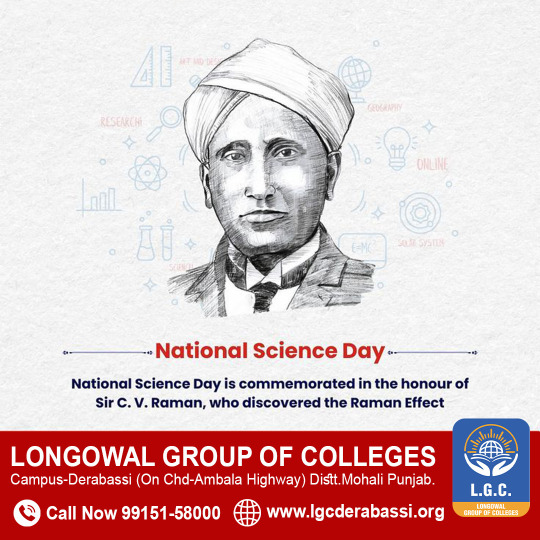
NationalScienceDay
#CelebratingScience#ScientificDiscovery#ScienceCelebration#Innovation#Research#STEM#ScienceDay#ScienceAndSociety#ScientificAdvancement#ScienceForAll#Curiosity#Knowledge#Inspiration#Discovery#ScienceIsLife#ScienceAwareness#ScienceCommunity#FutureOfScience#ScienceEmpowers#ScientificAchievement
0 notes
Text
𝑊𝑎𝑟𝑚 𝑤𝑖𝑠ℎ𝑒𝑠 𝑜𝑛 𝑁𝑎𝑡𝑖𝑜𝑛𝑎𝑙 𝑆𝑐𝑖𝑒𝑛𝑐𝑒 𝐷𝑎𝑦 𝑡𝑜 𝑒𝑣𝑒𝑟𝑦𝑜𝑛𝑒.
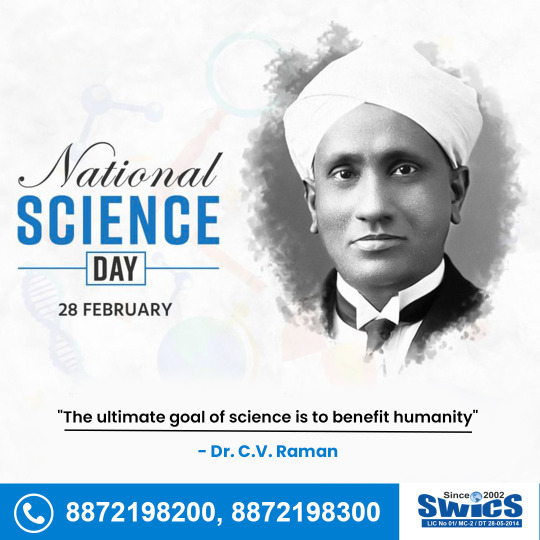
𝑆𝑐𝑖𝑒𝑛𝑐𝑒 𝑖𝑠 𝑡ℎ𝑎𝑡 𝑡𝑜𝑜𝑙 𝑡ℎ𝑎𝑡 ℎ𝑎𝑠 𝑔𝑖𝑣𝑒𝑛 𝑢𝑠 𝑡ℎ𝑒 𝑝𝑜𝑤𝑒𝑟 𝑡𝑜 𝑐ℎ𝑎𝑛𝑔𝑒 𝑡ℎ𝑖𝑠 𝑤𝑜𝑟𝑙𝑑 𝑎𝑛𝑑 𝑡ℎ𝑒𝑟𝑒𝑓𝑜𝑟𝑒, 𝑤𝑒 𝑚𝑢𝑠𝑡 𝑢𝑠𝑒 𝑖𝑡 𝑤𝑖𝑠𝑒𝑙𝑦.
𝑊𝑎𝑟𝑚 𝑤𝑖𝑠ℎ𝑒𝑠 𝑜𝑛 𝑁𝑎𝑡𝑖𝑜𝑛𝑎𝑙 𝑆𝑐𝑖𝑒𝑛𝑐𝑒 𝐷𝑎𝑦 𝑡𝑜 𝑒𝑣𝑒𝑟𝑦𝑜𝑛𝑒.
#ScienceDay#ScienceCelebration#ScientificAdvancement#InnovationInScience#STEM#ResearchAndDiscovery#ScienceCommunity#KnowledgeIsPower#ScienceForAll#CuriosityDriven#TechInnovation#ExploreDiscoverLearn#FutureOfScience#InspireThroughScience#EmpoweringThroughKnowledge#ScientificBreakthroughs#WonderOfScience#EducationForProgress#GlobalScience#ScienceMatters
0 notes
Text



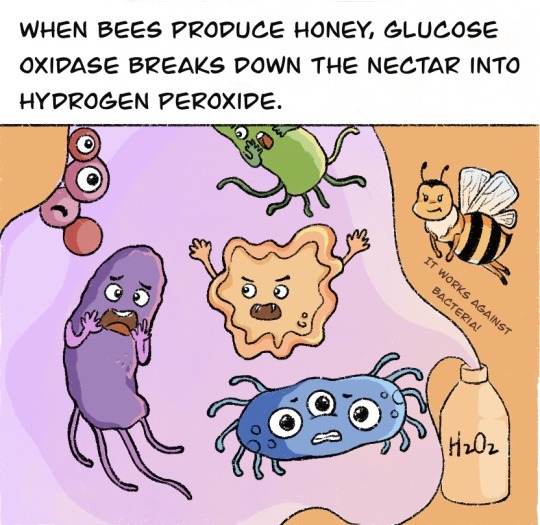
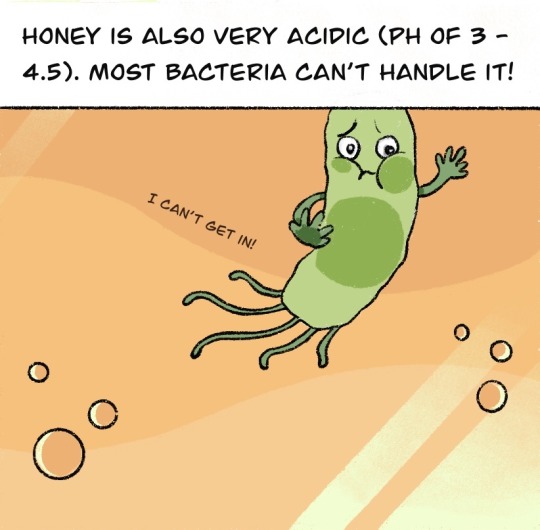
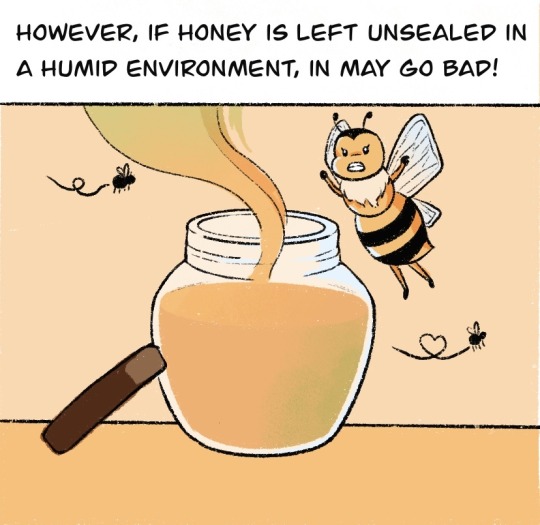

Do you know that a 3000-year-old honey was still edible? Does honey ever spoil?
#sciart#cute illustration#studyblr#sciencecommunication#biochemistry#stem education#chemistry#science#chemistry in real life#biology#food science#comics#cute comics
812 notes
·
View notes
Text

高知大学農林海洋科学部の生態学セミナーで発表の機会を頂き、初めての四国へ行ってきました。
私の蛾の実験について、学生の皆さんの生態学の研究について、そして科学コミュニケーションの実践について、じっくりと議論した充実の2日間。昆虫の研究が面白くてたまらない、という研究室の熱気に、私自身大いに刺激を受けて、楽しかったです(ご一緒したカツオもとてもおいしかった)。 皆さん大変お世話になりました!
2日目の午前は、念願の高知県立牧野植物園へ。 あまりの広大さに半分も回れませんでしたが、植物たちの展示・管理の丁寧さはもちろん、子供向け講座スペースまで準備された、研究施設としての充実ぶりにも驚かされました(私は南国の虫探しに夢中でしたが)。 写真はタイワンニンジンボク Vitex negundo で吸蜜するアオスジアゲハ Graphium sarpedon 。
#nature#insect#bug#science#ecology#evolution#biology#sciencecommunication#shikoku#kochi#japan#butterfly#Graphium#Papilionidae#Lepidoptera
8 notes
·
View notes
Text
Curiosity launched the quest ✨
#scicomm#sciencecommunication#scicommunity#simplify#inform#educate#makeithappen#knowledge#facts#truth#understanding#literacy#outreach#engage#inspire#advance#impact#change#future#connection#collaboration#transparency#science#STEM#womeninSTEM
15 notes
·
View notes
Text
Analysis of: "From Brain to AI and Back" (academic lecture by Ambuj Singh)
youtube
The term "document" in the following text refers to the video's subtitles.
Here is a summary of the key discussions:
The document describes advances in using brain signal recordings (fMRI) and machine learning to reconstruct images viewed by subjects.
Challenges include sparseness of data due to difficulties and costs of collecting extensive neural recordings from many subjects.
Researchers are working to develop robust models that can generalize reconstruction capabilities to new subjects with less extensive training data.
Applications in medical diagnosis and lie detection are possibilities, but risks of misuse and overpromising on capabilities must be carefully considered.
The genre of the document is an academic lecture presenting cutting-edge neuroscience and AI research progress to an informed audience.
Technical content is clearly explained at an advanced level with representative examples and discussion of challenges.
Ethical implications around informed consent, privacy, and dual-use concerns are acknowledged without overstating current capabilities.
While more information is needed, the presentation style and framing of topics skews towards empirical science over opinion or fiction.
A wide range of stakeholders stand to be impacted, so responsible development and governance of emerging neural technologies should involve multidisciplinary input.
Advancing both basic scientific understanding and more human-like machine learning is a long-term motivation driving continued innovation in this important field.
Here is a summary of the key points from the document:
The speaker discusses advances in using brain signal recordings (fMRI) to reconstruct images that a person is viewing by training AI/machine learning models.
An example is shown where the top row is the actual image viewed and the bottom row is the image reconstructed from the person's brain signals.
Larger datasets with brain recordings from multiple subjects are allowing better models to be developed that may generalize to new subjects.
Challenges include the sparseness of brain signal data due to the difficulty and costs of collecting it from many subjects.
A model is presented that maps brain signals to a joint embedding space of images and text, allowing reconstruction of novel images from new brain signals.
Examples are shown where the reconstructed images match fairly well or not as well depending on image details and semantics.
Issues around ethics, risks of misuse, and questions of explaining and improving the models are discussed.
Ongoing work aims to address challenges around transferring models between subjects and measuring reconstruction performance.
Based on the content and style of the document, it appears to be an academic lecture or presentation.
Key evidence points include:
The document consists primarily of a speaker talking and presenting slides/examples to an audience, as indicated by phrases like "Let me just start with this" and an applause at the end.
Technical topics from neuroscience and machine learning/AI are discussed in detail, such as fMRI brain recordings, reconstructing images from brain signals, modeling approaches, dataset descriptions, and challenges/questions in the field.
Academic concepts like human subjects studies, building models, transferring learning, and measuring performance are referred to.
The presentation of information is intended to educate the audience on the state of the field and cuttting edge research, not just entertain.
There are no narratives, characters or creative storytelling elements - it adheres strictly to explaining complex technical content.
Therefore, based on the instructive/educational style and focus on explaining advanced technical research, I would classify the genre of this document as an academic lecture/presentation intended to inform an audience about progress in the domain of neuroscience and artificial intelligence.
Here are some of the key stakeholders that could be affected by the content and topics discussed in this document:
Neuroscience researchers - Directly interested and impacted by advances reported from their field of study. Progress informs future research directions.
AI/machine learning researchers - Models and challenges discussed could inspire new research at the intersection of AI and neuroscience. Transfer of model techniques.
Medical/clinical communities - Potential applications to diagnosis, personalized medicine if models can accurately reconstruct brain states. Raises ethical issues.
Government research agencies - Fund future related research based on understanding of opportunities and challenges conveyed. Evaluates societal impacts.
General public - Increased understanding of science helps engagement but topics like brain reading raise public concerns around privacy, consent if translated beyond research.
Research participants - Summary does not disclose identities but motivates others to contribute data for progress. Well-being depends on responsible use of data.
Technology companies - Commercial opportunities from real-world applications but also reputational risks if misused. Data ownership questions.
Academic institutions - Collaborations, education of next generations of researchers on cutting-edge topics is enabled through open dissemination of knowledge.
Overall the document provides value to a wide range of stakeholders by communicating the state and potential implications of this multidisciplinary area of neuroscience and AI research. Responsible stewardship is important given several ethical considerations.
Here is a summary of the key points about advances in using brain signal recordings from the document:
Researchers are using fMRI to record brain signals as people view images, in order to reconstruct the viewed images from the brain activity patterns alone.
Machine learning models, especially neural networks, are allowing researchers to train mappings from brain signals to representations of semantic content like images and text.
Examples show the capability of reconstructing fairly accurate images that a person viewed, based solely on their brain activity recordings during viewing.
Larger datasets with multiple subjects are important to develop models that may generalize beyond individual subjects. However, fMRI data is very difficult and expensive to collect at scale.
Advances now allow reconstruction of more complex stimuli like full stories a person reads, not just static images.
Ongoing work aims to better understand brain learning processes and apply those principles to more human-like machine learning architectures.
Analyzing brain recordings also has potential applications for medical diagnosis, lie detection, personalized medicine as models improve.
Ethics must be carefully considered to ensure technologies for reading neural signals are developed and applied responsibly and avoid misuse or privacy violations.
So in summary, the document outlines significant progress using machine learning on brain recordings to reconstruct sensory experiences, with applications and open questions that can further both neuroscience and AI.
Here is a summary of the key points about the sparseness of brain signal data:
Collecting fMRI brain signal recordings from large numbers of subjects is extremely challenging and costly due to the resources and time required.
Each recording session with a single subject takes considerable time, as the number of images/stimuli that can be presented is limited within a session.
Collecting data from a single subject sufficient for training complex models may require recording sessions over multiple days or weeks.
As a result, publicly available datasets typically contain recordings from only a small number of subjects, often under 10.
The sparseness of data makes it difficult to develop robust models that will generalize well to new subjects that lack extensive recordings.
Researchers aim to better leverage smaller datasets by training models that can reconstruct novel stimuli from just a subset of training data per subject.
If successful, this could enable more efficient data collection, such as obtaining usable models from a subject after a single shorter session rather than many long sessions.
However, overcoming the sparseness of brain signal data remains a major challenge holding back progress in the field. Larger collaborative datasets are needed.
So in summary, sparse data severely limits progress but also motivates techniques to optimize learning from limited samples per subject.
Here is a summary of key points regarding risks of misuse from the document:
Advances in reconstructing cognitive states like images viewed from brain recordings raise potential dual-use concerns if technologies are not regulated.
Applications in medical diagnosis and lie detection could help many, but lead to issues if used without consent or for non-medical surveillance.
Overly ambitious claims about capabilities need to be avoided to prevent misleading expectations that could fuel inappropriate usage assumptions.
Privacy and security of sensitive neural data must be prioritized to prevent potential misuse for profiling, identification or manipulation without oversight.
Commercial pressures may incentivize premature deployment before understanding implications, so continued research is important.
Public education about limitations and complexities involved can help curb fears that fuel misuse if capabilities are overestimated.
Multidisciplinary cooperation ensures societal and ethical issues are considered proactively rather than reactively addressed later.
Governance frameworks may be needed to steer applications toward public benefit rather individual or state abuse of personal mental information.
The speaker acknowledges misuse risks to inform discussion and underscore the importance of ongoing examination of new neural technologies through multidisciplinary lens including ethics.
Based on the content and style of presentation, my evaluation of the document status is:
Science vs Fiction: Clearly grounded in science as it discusses ongoing empirical research studies using neuroimaging and machine learning techniques. No fictional or hypothetical elements.
Empirical vs Anecdotal: Empirical in nature, rooted in dataset collection from human subjects and quantitative modeling/evaluation, not personal experience. While data quantities are limited, research follows scientific method.
Fact vs Opinion: Primarily presents technical details and research findings as established facts from the literature. Does not advance strong personal opinions beyond realistic discussion of challenges. Maintains an objective tone.
Objective vs Subjective: Remains objective in explaining research accomplishments and questions objectively without emotive language or bias. Any subjective experience like dataset limitations are clearly labeled as such. Presentation aims for factual information transfer.
In summary, while farther research is still ongoing, the document presents the current state of a scientific research domain factually based on empirical evidence and quantitative analysis published in the field. It does not intermingle non-factual elements or stray from an objective reporting of the topic at hand. The status therefore skews heavily toward science, empiricism, fact and objectivity.
I did not identify any logical fallacies in the content or arguments presented in this document.
The speaker objectively summarizes established research results and proposals, without making assertions that require logical scrutiny.
Some key reasons why logical fallacies are not present include:
No causal claims are made without proper evidence or empirical support from published studies. Progress is tied to concrete research efforts.
No arguments are constructed through flawed reasoning or non sequiturs. Concepts are explained clearly and build upon each other logically.
Comparisons to other approaches are fair without strawman misrepresentations of opposing ideas. Related work is acknowledged.
Limitations and open challenges are candidly outlined rather than ignored or obscured through fallacious defense.
No emotional, exaggerated or politically motivated language is used that could constitute emotional appeals. Tone remains factual.
No false dilemmas or false attributions of complexity are presented. Discussions appropriately scope multi-factor research questions.
No hasty generalizations are made from limited evidence. Data constraints are clearly communicated.
Overall, through objectively summarizing established neuroscience and AI research domains and techniques, without engaging in argument or debate, I did not find any logical fallacies employed in this academic information-sharing document. The focus appears to be factual reporting of progress and issues, avoiding fallacious reasoning.
Here is an evaluation of the ethics addressed and considered in the document:
Informed consent is implied but not explicitly discussed for research participants. Given the sensitivity of brain data, proper protocols were likely followed.
Privacy and anonymity of participants is a concern, but cannot be fully assessed without more details on the dataset and review process.
Potential dual-use issues around brain reading/reconstruction technologies are identifed by discussing applications but also worries about misuse or lack of oversight. This shows awareness of ethical implications.
Limitations and challenges and openly discussed, avoiding overpromising on capabilities. This establishes credibility and sets appropriate expectations.
Societal impacts and usage beyond research (e.g. diagnostics) are flagged as requiring careful consideration of risks like surveillance, discrimination if not regulated properly.
No claims are made without empirical evidence, showing results are driven by facts rather than desires which can bias judgment. Objectivity helps ethical analysis.
Multidisciplinary collaboration is emphasized , suggesting diverse viewpoints were incorporated into the research process.
Overall, while full review details are not provided, the document demonstrates an awareness of important ethical considerations around privacy, consent and responsible development for these sensitive types of neural data and technologies. A balanced assessment of opportunities and risks is conveyed.
Here are the usual evaluation criteria for an academic lecture/presentation genre and my evaluation of this document based on each criteria:
Clarity of explanation: The concepts and technical details are explained clearly without jargon. Examples enhance understanding. Overall the content is presented in a clear, logical manner.
Depth of technical knowledge: The speaker demonstrates thorough expertise and up-to-date knowledge of the neuroscience and AI topics discussed, including datasets, modeling approaches, challenges and future directions.
Organization of information: The presentation flows in a logical sequence, with intro/overview, detailed examples, related work, challenges/future work. Concepts build upon each other well.
Engagement of audience: While an oral delivery is missing, the document seeks to engage the audience through rhetorical questions, previews/reviews of upcoming points. Visuals would enhance engagement if available.
Persuasiveness of argument: A compelling case is made for the value and progress of this important multidisciplinary research area. Challenges are realistically discussed alongside accomplishments.
Timeliness and relevance: This is a cutting-edge topic at the forefront of neuroscience and AI. Advances have clear implications for the fields and wider society.
Overall, based on the evaluation criteria for an academic lecture, this document demonstrates strong technical expertise, clear explanations, logical organization and timely relevance to communicate progress in the domain effectively to an informed audience. Some engagement could be further enhanced with accompanying visual/oral presentation.
mjsMlb20fS2YW1b9lqnN
#Neuroscience#Brainimaging#Neurotechnology#FMRI#Neuroethics#BrainComputerInterfaces#AIethics#MachineLearning#NeuralNetworks#DeepLearning#DataPrivacy#InformationSecurity#DigitalHealth#MentalHealth#Diagnostics#PersonalizedMedicine#DualUseTech#ResearchEthics#ScienceCommunication#Interdisciplinary#Policymaking#Regulation#ResponsibleInnovation#Healthcare#Education#InformedConsent#Youtube
2 notes
·
View notes
Text
“Extraordinary claims require extraordinary evidence.”

Carl Edward Sagan was an American astronomer, planetary scientist, and science communicator. His best-known scientific contribution is his research on the possibility of extraterrestrial life, including the experimental demonstration of the production of amino acids from basic chemicals by exposure to light.
Born: 9 November 1934, Brooklyn, New York, United States
Died: 20 December 1996 (age 62 years), Fred Hutch Cancer Center, Seattle, Washington, United States.
Popularised Science Through “Cosmos” Sagan co-wrote and hosted Cosmos: A Personal Voyage (1980), a groundbreaking TV series that brought astronomy and the wonder of the universe into millions of homes. It became one of the most-watched PBS series in history.
Worked on NASA Missions He played a major role in several NASA missions, including the Mariner, Viking, Voyager, and Galileo programs. He helped design messages for extraterrestrial life, like the Golden Record aboard Voyager.
Pioneer of Planetary Science Sagan was instrumental in explaining the greenhouse effect on Venus, the seasonal changes on Mars, and the nature of Saturn's moon Titan. He essentially helped define planetary science as a field.
Wrote the Novel Contact His 1985 science-fiction novel Contact (later made into a film starring Jodie Foster in 1997) tackled the philosophical and scientific implications of contact with extraterrestrial life.
Advocated Against Nuclear Weapons Sagan warned about “nuclear winter”—the potential climate effects of widespread nuclear war. He used his platform to push for nuclear disarmament during the Cold War, blending science with social responsibility.
#CarlSagan#Cosmos#ScienceCommunicator#PaleBlueDot#Astrophysics#AstronomyLegend#PlanetaryScience#NASAContributor#GoldenRecord#VoyagerMissions#CosmicPerspective#Humanist#Skepticism#NuclearDisarmament#ScientificWonder#ContactTheNovel#StarStuff#SecularHumanism#EducatorExtraordinaire#VoiceOfTheCosmos#quoteoftheday#new blog#today on tumblr
0 notes